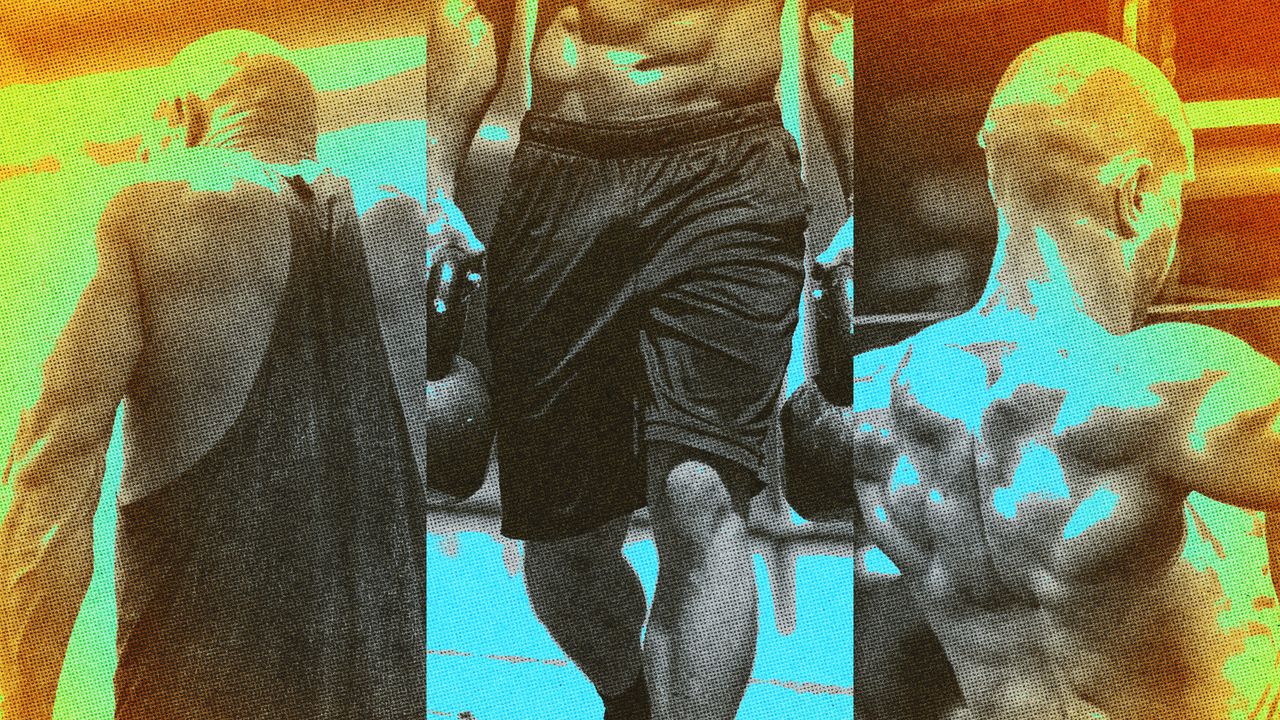Ask someone in the weight room to point to their trapezius muscle, or “traps” in gym-speak, and they’ll probably gesture toward the small mounds of muscle nestled in between their neck and shoulders. But while those are technically part of your traps, they’re really just the tip of the iceberg.
“There’s actually a lot more mass to the traps than most people realise,” says Luke Carlson, founder and CEO of Discover Strength. Your traps are a diamond-shaped group of muscle fibres that extend from the sides of your neck to your shoulders and down to a point at around your mid-back, covering about a third of the visible muscle on your back.
However, many of the best trap exercises live in a gray area somewhere in between shoulder day and back day, so they’re often left out of both. “When someone wants to add lean muscle tissue, a lot of times they think about the chest, the lats, the biceps, and the triceps,” Carlson says. “But we usually miss out on training the traps, and there’s a significant amount of muscle tissue there.”
Increasing your overall muscle mass isn’t the only reason to do trap exercises. According to experts, strengthening your traps can prevent injuries in and out of the gym and even help protect your neck from the posture-destroying effects of staring at your phone.
Why you should train your traps
Developing your traps is a surefire way to fill out a formidable physique (see: Dwayne Johnson in The Smashing Machine) because, unlike most back muscles, they’re also top-tier mirror muscles. “I think it’s a great muscle to train, because it’s just so visible, whether you’re wearing a T-shirt, tank top, or even a dress shirt,” says Carlson.
But cutting a hulking silhouette isn’t the only way that targeting your traps can benefit your appearance. “The other benefit of training the traps is we can prevent things like kyphosis, which is that forward curvature of the spinal column—what we call ’tech neck’ today,” Carlson says. “The traps are what pull the head and the neck back. So, from a posture standpoint, it’s an awesome muscle to train.”
Giving your traps the attention they deserve can pay dividends in your other workouts too. “It’s obviously great for posture and your day-to-day, but working your traps is also going to carry over into keeping your shoulders healthy for pressing and other movements,” says Antony Brown, personal training leader at Life Time in Lake Zurich, Illinois.
“The traps really stabilise the shoulder joint,” says Brown. “If we can better lock the shoulders back and down on the bench press, or keep them nice and stable while overhead pressing, that’s going to lead to a much stronger press because you’ve got a way stronger base.”
Ready to pay tribute to the unsung heroes of your upper back? Here are the three best trap exercises, according to personal trainers.
Three trainer-approved exercises for building bigger traps
Shrug
Shrugs target the upper portion of the traps—the part that’s most visible in the mirror and, of course, selfies. “This is what you see when you look at someone’s neck and shoulders from the front,” Carlson says. Working on your upper traps is one of the best ways to get yoked around your neck area, and shrugs are both the simplest and most efficient way to do it. Fortunately, it’s also one of the most accessible exercises out there. No gym membership? No problem. You can do shrugs with a pair of dumbbells or kettlebells, or a barbell or trap bar, but in a pinch you could use anything from grocery bags to backpacks filled with books, as long as you’re able to keep the weight somewhat even between them.
How to do it:
Grab a pair of dumbbells and stand tall with one weight in each hand, arms hanging at your sides. This is your starting position.Keeping your arms straight, slowly shrug your shoulders up toward your ears. “Of course, your shoulders aren’t actually going to touch your ears, but that’s kind of your goal,” Carlson says. “The key is you’re focused on pulling the shoulders straight up”—and not allowing them to roll forwards or backwards.Pause for a count at the top of the rep. You can accentuate the muscle contraction by “pulling your collarbones up towards your ears and slightly bending your elbows,” says Brown.Slowly lower your shoulders with control to return to the starting position. Be sure to lower the weights all the way down until you feel a stretch in your upper traps. That’s one rep.

